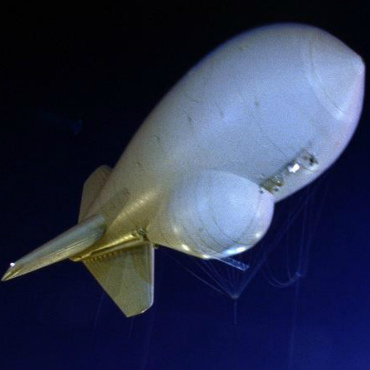Border drones and aerostats need better coordination

Although Customs and Border Protection coordinates its airborne border surveillance aircraft with other agencies, it needs to refine some specifics, according to a GAO report.

A tethered dirigible or aerostat, like the kind CBP uses to keep tabs on the U.S.-Mexico border.
Customs and Border Protection is coordinating Predator B drone operations and collecting data through aerostats in some border locations, it still has some work to do with how that mission data is collected from those vehicles, said a Feb. 16 report from the Government Accountability Office.
CBP coordinates use of Predator B operations through its National Air Security Operations Centers (NASOCs) in Texas and North Dakota, as well as through its joint task force operations. Additionally, its "Big Pipe" system distributes operational mission data to supported federal, state and local law enforcement agencies. That real-time and recorded mission information includes data from sensors on CBP Air & Marine Operations vehicles.
However, the report said CBP has not documented procedures for coordinating of Predator B operations among its supported agencies through its NASOCs in Texas and North Dakota. It said the national policies the agency has in place for its Predator B operations, including those for prioritization of the aircraft missions and processes for submission, mission review or air support requests, do not include coordination procedures specific to Predator B operating locations or NASOCs.
It's a fine point, but one that can complicate local tasking of Predator aircraft and procedures for sharing mission information among NASOCs and joint operations, GAO said.
CBP also could improve collection of Predator B mission data by updating guidance and training to make sure data is collected and recorded in a standardized way across all of the vehicle operating area.
Additionally, GAO found CBP could make some distinctions in data collected from its aerostats.
The agency has several kinds of the tethered airborne platforms watching border areas. The Tethered Aerostat Radar System system captures continuous radar information and detects moving objects passing through its radar coverage area that can include lawful and unlawful aircraft, vessels, or vehicles entering or approaching the United States. CBP also uses tactical aerostats to watch specific areas of interest along the border for illegal activity, gathering video through sensitive cameras.
While data from both systems are used to support apprehension of individuals and with drug seizures, CBP doesn't distinguish between data collected by tactical systems or TARS.
Distinguishing data gathered by the systems, said the report, would help the agency collect better and more complete information that could be used to help decide where to put aerostats, including re-deploying them to other locations as illegal cross-border activity shifts.


